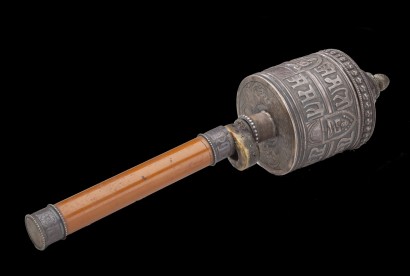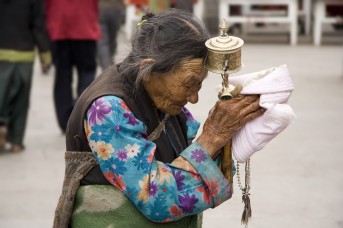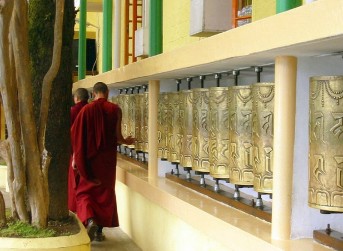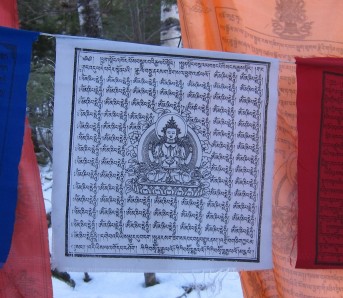Tibet, 19th century; metal, wood, bone, paper; 11 x 2 3⁄4 in.; The Newark Museum, Gift of Mary Pyne Cutting, 1982, 82.82, photo: Robert Goodbody, Courtesy of Princeton University Art Museum.
On its body, this brass prayer wheel displays the mani mantra in a raised Sanskrit-derived script. Niches with seated depictions of the Five Wisdom Buddhas appear around the syllables om mani padme hum, known as the six-syllable mantra. Inside the cylinder is a roll of paper with this mantra written many times. To Tibetans, reciting these sacred syllables expresses the essence of Avalokiteshvara himself. Thus, when spun manually, the prayer or mani wheel sends out the positive energy of compassion into the world while taking in and destroying all bad karma. CZ







